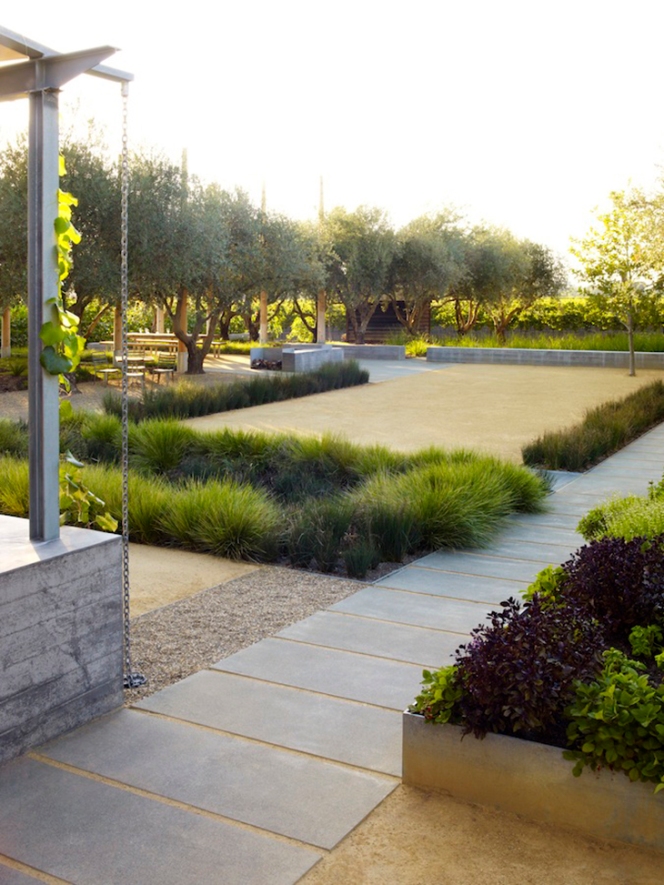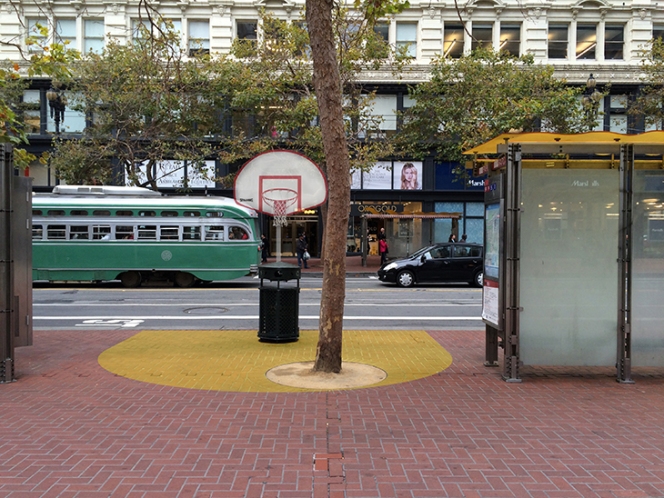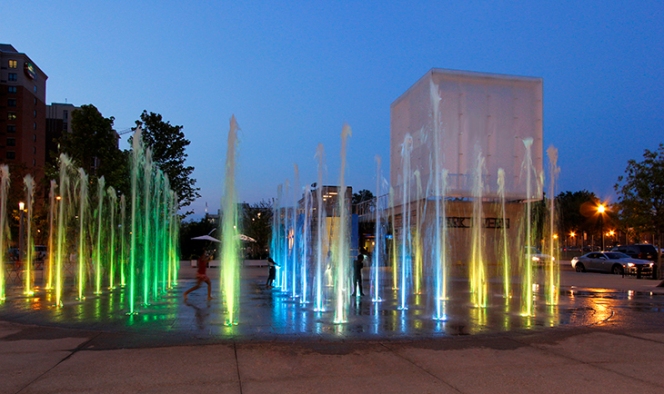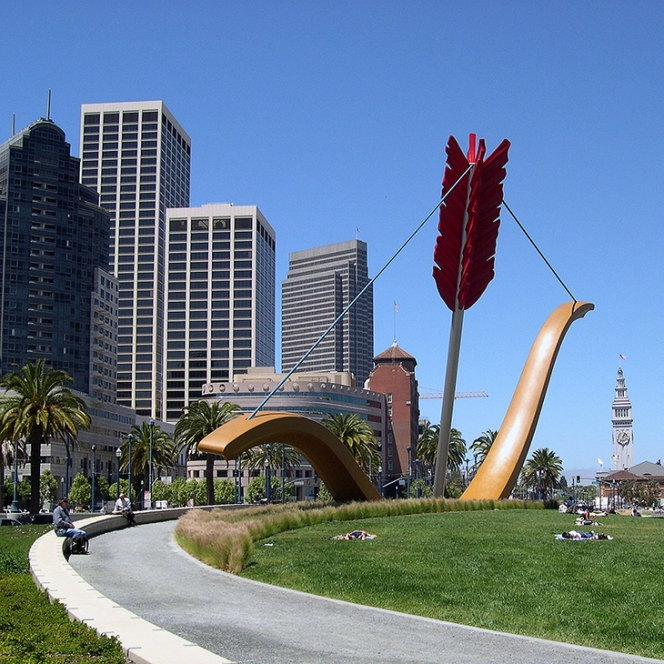Your Cart is Empty
Customer Testimonials
-
"Great customer service. The folks at Novedge were super helpful in navigating a somewhat complicated order including software upgrades and serial numbers in various stages of inactivity. They were friendly and helpful throughout the process.."
Ruben Ruckmark
"Quick & very helpful. We have been using Novedge for years and are very happy with their quick service when we need to make a purchase and excellent support resolving any issues."
Will Woodson
"Scott is the best. He reminds me about subscriptions dates, guides me in the correct direction for updates. He always responds promptly to me. He is literally the reason I continue to work with Novedge and will do so in the future."
Edward Mchugh
"Calvin Lok is “the man”. After my purchase of Sketchup 2021, he called me and provided step-by-step instructions to ease me through difficulties I was having with the setup of my new software."
Mike Borzage
The Edge: Jennifer Brooks, the Lesson of Landscape Architecture.
December 01, 2015 8 min read
Novedge: Tell us a little bit about yourself and who you are.  Jennifer Brooks: I am a Landscape Architect, and relatively recent arrival to San Francisco. My husband and I moved here from Brooklyn three years ago, and I remain captivated by the dramatic beauty of this city! In fact, my adolescence was somewhat nomadic, and my experience moving around the country is, I think, what led me to Landscape Architecture. Growing up, my dad’s job took us from the northeast, to the Midwest, to the southeast. These were my formative years, and I was becoming increasingly curious about the built environment beyond my backyard. I took specific notice of the anonymity of the suburban communities that were our temporary settlements, seemingly placeless in spite of their regional differences. It wasn’t until studying Urban Design in college that I was able to contextualize these observations, and I was empowered to pursue a career that could shape and give meaning to the built environment. My beginnings in Urban Design direct my approach to Landscape Architecture. I am inspired by the ways in which big ideas become physical form, and fascinated by how the built landscape expresses what we value and hold sacred. The practice of Landscape Architecture resonates deeply with my own instincts in that it relies on iterative process, on spatial reasoning, on visual communication, and on thinking about systems broadly and at the scale of a single organism. I’ve been incredibly fortunate to work with truly remarkable colleagues in the field, and to have had a hand in some exciting and influential projects in the US. Most recently, I worked at Nelson Byrd Woltz Landscape Architects(NBW), first in their New York office, and until this past March, in San Francisco. Now, I teach undergraduate and graduate Landscape Architecture Design Studios at UC Berkeley, and have established my own design workshop, Parcel Landscape Studio, as a venue for further investigation into the landscape medium as a vehicle for design expression and ecosystem literacy.
Jennifer Brooks: I am a Landscape Architect, and relatively recent arrival to San Francisco. My husband and I moved here from Brooklyn three years ago, and I remain captivated by the dramatic beauty of this city! In fact, my adolescence was somewhat nomadic, and my experience moving around the country is, I think, what led me to Landscape Architecture. Growing up, my dad’s job took us from the northeast, to the Midwest, to the southeast. These were my formative years, and I was becoming increasingly curious about the built environment beyond my backyard. I took specific notice of the anonymity of the suburban communities that were our temporary settlements, seemingly placeless in spite of their regional differences. It wasn’t until studying Urban Design in college that I was able to contextualize these observations, and I was empowered to pursue a career that could shape and give meaning to the built environment. My beginnings in Urban Design direct my approach to Landscape Architecture. I am inspired by the ways in which big ideas become physical form, and fascinated by how the built landscape expresses what we value and hold sacred. The practice of Landscape Architecture resonates deeply with my own instincts in that it relies on iterative process, on spatial reasoning, on visual communication, and on thinking about systems broadly and at the scale of a single organism. I’ve been incredibly fortunate to work with truly remarkable colleagues in the field, and to have had a hand in some exciting and influential projects in the US. Most recently, I worked at Nelson Byrd Woltz Landscape Architects(NBW), first in their New York office, and until this past March, in San Francisco. Now, I teach undergraduate and graduate Landscape Architecture Design Studios at UC Berkeley, and have established my own design workshop, Parcel Landscape Studio, as a venue for further investigation into the landscape medium as a vehicle for design expression and ecosystem literacy.
Novedge: Your work explores the intersection of Design, Ecology and Infrastructure. Could you give us a practical example of that?
Jennifer Brooks: NBW as a firm embodies this approach, and it was during my six years working for NBW that I came to understand what this means in practice. I was fortunate to collaborate on a number of projects that manipulate site systems—such as hydrology—to perform ecological functions—for example, stormwater collection and groundwater infiltration, and that use an intentional language of spatial relationships, material choices, and textures, to reveal these processes and to craft a meaningful experience of place.  The Medlock Ames Tasting Room Garden in Healdsburg is an excellent example. The design transforms a historic but defunct 1920’s roadside station and parking lot into a hydrologically focused, biodiverse, ecological system to accommodate a tasting room, an organic produce garden housed in a grid of galvanized steel planter boxes, and an immersive outdoor dining room and courtyard. The underlying structure and primary organizing element of the garden comes from a stormwater management strategy: all of the water that falls on the site is directed, through gently sloping paths and courtyards, to a sunken planting of native riparian grasses at the center of the site.
The Medlock Ames Tasting Room Garden in Healdsburg is an excellent example. The design transforms a historic but defunct 1920’s roadside station and parking lot into a hydrologically focused, biodiverse, ecological system to accommodate a tasting room, an organic produce garden housed in a grid of galvanized steel planter boxes, and an immersive outdoor dining room and courtyard. The underlying structure and primary organizing element of the garden comes from a stormwater management strategy: all of the water that falls on the site is directed, through gently sloping paths and courtyards, to a sunken planting of native riparian grasses at the center of the site. This topography is so subtle that your body doesn’t perceive it as you move through the landscape. But, because we wanted to reveal this functioning hydrologic system, we made a specific design decision to keep the tops of the galvanized planters level with one another, so that they become a datum against which to measure the sloping ground. This design detail expresses the flow and capture of water, and in doing so, conveys that water is a precious resource. Similarly, a commitment to preserving native habitat, regional plant ecology, and water resources is upheld through a careful selection of native and utilitarian plants. Each plant species in the garden is meant to provide the public with direct contact to organic farming practices in the context of regional native ecology.
This topography is so subtle that your body doesn’t perceive it as you move through the landscape. But, because we wanted to reveal this functioning hydrologic system, we made a specific design decision to keep the tops of the galvanized planters level with one another, so that they become a datum against which to measure the sloping ground. This design detail expresses the flow and capture of water, and in doing so, conveys that water is a precious resource. Similarly, a commitment to preserving native habitat, regional plant ecology, and water resources is upheld through a careful selection of native and utilitarian plants. Each plant species in the garden is meant to provide the public with direct contact to organic farming practices in the context of regional native ecology.  Species were selected for both their ecological value and for their spatial characteristics. Finally, the material choices are equally expressive of an attention to local natural systems and resource conservation. Existing redwood salvaged during demolition was used to construct the fence, a felled sycamore was milled to create benches, and the use of wood, galvanized steel and concrete create visual, material, and spatial continuity between the interior of the tasting room, the garden, and the landscape beyond. As a result, the garden remains authentic and responsive to its context. Furthermore, this designed landscape gives the Tasting Room a specific identity; people know this place for the garden, and they associate the garden with the wine. And because the garden sets up a framework for ecological systems, it has also brought a discussion about these systems and their functions into common conversations.
Species were selected for both their ecological value and for their spatial characteristics. Finally, the material choices are equally expressive of an attention to local natural systems and resource conservation. Existing redwood salvaged during demolition was used to construct the fence, a felled sycamore was milled to create benches, and the use of wood, galvanized steel and concrete create visual, material, and spatial continuity between the interior of the tasting room, the garden, and the landscape beyond. As a result, the garden remains authentic and responsive to its context. Furthermore, this designed landscape gives the Tasting Room a specific identity; people know this place for the garden, and they associate the garden with the wine. And because the garden sets up a framework for ecological systems, it has also brought a discussion about these systems and their functions into common conversations. 
Novedge: What would you like to see in Landscape Architecture in the next 10 years? What about the next 30 years?
Jennifer Brooks: We’ve inherited a legacy that compartmentalizes Landscape Architecture as garden design. It is odd to me how this superficial understanding of Landscape Architecture persists, even as the design disciplines become more sophisticated in working with one another. I hope this changes over the next 10 years, and sooner! Garden design is a valuable aspect of the profession, but a narrow understanding of its potential. Landscape Architecture is not only making plant selections, it is infrastructure: the sidewalk and the storm drains are as much landscapes as the street trees, and significantly, it is the how this network of sidewalks, storm drains, and street trees operate as a system that constitutes robust Landscape Architecture. Globalization, climate change, and rapid urbanization—these forces are having unprecedented impact on the function and appearance of our built environment. Changes to the landscape that were once imperceptible because they occurred over hundreds of years are now happening over decades, before our eyes. Familiar places are quickly becoming landscapes that we don’t recognize because they are extremely dry due to lack of precipitation, or too hot, or inundated for stretches of the year. As we move forward into the next decade and beyond, Landscape Architecture is the discipline that will be mediating these physical changes, solving the challenges that arise from escalating collisions between natural systems and our built world, and harnessing design language to bring legibility to the unfamiliar.
Novedge: Is there a difference in the approach East Coast and West Coast have towards nature?
Jennifer Brooks: Moving from the East Coast to California has been quite a culture shock, not the least in the landscape! The difference in plants and seasonal shifts is pleasantly disorienting. While values between the two coasts are shared, in San Francisco the Mediterranean climate and immediate proximity to vast tracts of protected open space enable a lifestyle where being outdoors is more integrated into the everyday experience. Going out for a hike is much more spontaneous on the west coast. Here, you just need a pair of good sneakers and a snack. On the east coast, when you leave for a hike, you bring a tent and a sleeping bag and you’re probably not coming back for three days. San Francisco’s Mediterranean climate also defines a strong connection between inside and outside spaces. This is probably my favorite thing about living here, and also one of the sweetest differences from a design perspective, because it opens up unlimited design opportunities. You can’t have this on the east coast because it’s either too cold, or too muggy, or there are too many bugs.
Novedge: You are also a teacher, what are you learning from your students?
Jennifer Brooks: I teach Design Studios, and these have a very specific format. Students are asked throughout the course of the semester to take on hypothetical design problems. The instructor’s role is to guide students through an iterative design process, to teach the students relevant tools and skills to use during the design process, and to critique the students’ work with the ultimate objective of demonstrating for the students how to be self reflective and critical of their own designs. Going through this process repeatedly with the students sharpens my own critical voice and skill set. My students also teach me a lot about how this generation that is coming of age sees the world. Their altruism is uplifting and inspiring.
Novedge: Pen, pencil or computer?
Jennifer Brooks: All three! More important is to know which of these tools works best to communicate a specific idea, and when in the process it is appropriate to move from analog to digital mode. I was in design school right around the time that design education was transitioning from hand drawing to CAD, and since then, advances in the capabilities of design software have been tremendous. Digital visualization tools are game changing. But I can’t think through a design in the computer. I need to have a pen in hand, preferably a Pilot Precise V5 Extra Fine.
Novedge: What does it mean to be bold in design?
Jennifer Brooks: Being bold in design means taking risks. It does not mean proposing the biggest, loudest thing. Often it means having the awareness to exercise restraint. Design has tremendous power as an advocacy tool. Landscape Architecture can express cultural beliefs, transform cultural practices, solve infrastructural issues, address public health crises, and impact government policy. The depth of skills involved in practice, and the imperative for cross-disciplinary collaboration with professionals such as scientists, historians, artists, urban designers, engineers, and government officials, allows for far-reaching impact. Harnessing this power on behalf of those who do not have a voice is to be bold in design.
Novedge: During the GOOD Design Challenge Forum, an event organized by the AIA San Francisco and sponsored by Novedge, you took it upon yourself to rethink Urban Play. Where did you get your inspiration?
Jennifer Brooks: The GOOD Design Challengethat I recently participated in is a perfect example of design synergy. In keeping with the Architecture and the City theme Play: Design In Action, I was invited by the AIASF Center for Design and Architecture to develop design strategies that would enable adults, as well as children, to engage in play in the built environment. I worked closely with the local organization SF Beautifulto imagine what an adult playground might look and feel like, and we agreed that a typical destination playground wasn’t it. San Francisco is at the forefront of innovation in spontaneous urban interventions, and the local parklet movement provided inspiration. Our proposal, Recreation Rx, imagines play as a mandatory component of civic infrastructure: parking meters doubling as juke boxes, a transit station stairway becoming a slide, a trashcan becoming a basketball hoop.  While interventions similar to these exist elsewhere in single instances, conceiving of these interventions together as an infrastructural system distinguishes this proposal. These collage provocations challenge us to pocket our hand-held devices in favor of an authentic urban experience and critically, recognize the role of play in inspiring creativity and innovation. In doing so, Recreation Rx shifts our daily routine from mundane to exhilarating, and enables our capacity for adaptability and resilience—crucial skills for urban citizens in our rapidly changing world.
While interventions similar to these exist elsewhere in single instances, conceiving of these interventions together as an infrastructural system distinguishes this proposal. These collage provocations challenge us to pocket our hand-held devices in favor of an authentic urban experience and critically, recognize the role of play in inspiring creativity and innovation. In doing so, Recreation Rx shifts our daily routine from mundane to exhilarating, and enables our capacity for adaptability and resilience—crucial skills for urban citizens in our rapidly changing world.
Jen Brooks has recorded a series of videosfor Forthnight Journal that are great examples and lessons of Landscape Architecture. Visit Jen's website to find out more about her work.
And visit Novedge to get the best tools for your next Landscape Architecture Projects.
Related articles
Also in NOVEDGE Blog

Enhance Your Designs with VisualARQ 3: Effortless Geometry Extensions for Walls and Columns
April 30, 2025 8 min read
Read More
MecSoft Unveils RhinoCAM 2025 and VisualCAD/CAM 2025 with Enhanced Features
March 08, 2025 5 min read
Read MoreSubscribe
Sign up to get the latest on sales, new releases and more …






